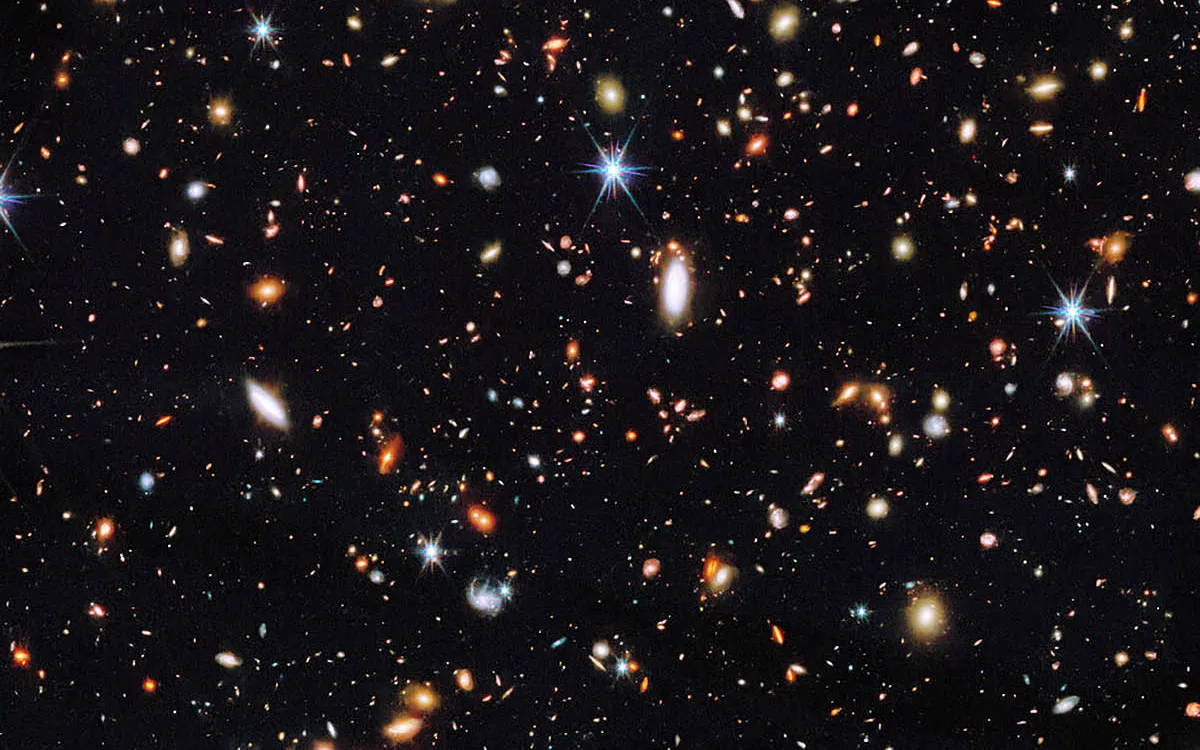
It is truly astounding how a single image can encapsulate such a vast wealth of information about the universe. Recently, the James Webb Space Telescope (JWST) unveiled a breathtaking view that showcases a crowded landscape filled with stars and galaxies. Each celestial body contributes unique insights into the unfolding narrative of the cosmos. This remarkable scene presents objects that are both near and distant, stretching across billions of years of cosmic time.
Leading the charge is the COSMOS-Web group, headed by Dr. Ghassem Gozaliasl from the University of Helsinki. This team has concentrated on the largest concentration of galaxies observed in the central region, where a dazzling cluster radiates a mesmerizing white-gold glow. The JWST's advanced capabilities allow scientists to capture unknown galaxies that were previously beyond our reach.
Scientists employ the term “light-year” to convey the distance light travels in one year, approximately 5.88 trillion miles (or 9.46 trillion kilometers). As light takes time to traverse these vast distances, instruments like the JWST enable us to glimpse conditions that existed eons ago. While the Hubble Space Telescope and other observatories have contributed to deep-sky surveys, the infrared detectors of the JWST are unveiling structures that have remained unseen until now.
Over half of all galaxies in our universe reside in groups, making these galaxy clusters invaluable for understanding galactic evolution. In these close-knit environments, galaxies interact through gravitational forces, which can reshape them in unexpected ways or even lead to mergers. The COSMOS-Web sample reveals that many of these galaxy clusters likely formed alliances that altered their histories, resulting in collisions or bursts of new star formation.
When galaxies inhabit crowded settings, their environments can strip gas away from their outer edges. This loss of gas restricts future star formation and accelerates the aging process of galaxies. Researchers have observed this phenomenon, known as ram pressure stripping, in numerous nearby clusters. In some instances, galaxies traversing the dense centers of groups may be torn apart by gravitational forces or collide with neighboring galaxies, triggering rapid starbursts or completely reshaping their structure.
The X-ray data collected by previous telescopes captures scorching clouds of gas within these galaxy groups, which would otherwise remain invisible without specialized instruments. Hubble’s visible and infrared images document stars in closer galaxies and the shimmering cores of distant ones. The JWST enhances this observation by detecting the faint infrared glow emitted by ancient objects that might otherwise remain unnoticed. Scientists analyze these observations to determine each galaxy’s distance, shape, and star content, noting that younger stars emit a bright blue light, while older stars glow red. “The more distant a galaxy, the redder it appears,” remarked the COSMOS-Web team, underscoring the significance of color variations in confirming ages and revealing star formation rates across vast epochs.
The COSMOS-Web initiative spans 0.54 square degrees of sky—an area more than twice the size of three full moons placed side by side. This extensive 255-hour program utilizes the JWST’s Near-InfraRed Camera to gather data supporting various studies on galaxy assembly, dark matter, and star formation. Researchers aim to identify galaxies born during the epoch of reionization, a pivotal period when early stars reionized hydrogen in the nascent universe. This project also seeks to understand how the mass of a galaxy’s stars correlates with the mass of its broader galactic halo, shedding light on the mechanisms that maintain galactic stability and where new stars might emerge.
The remarkable diversity of galactic forms captured in the JWST's latest image is striking. Some galaxies swirl gracefully with spiral arms, while others appear as smooth, bright blobs or engage in intricate interactions with neighboring galaxies. Each configuration narrates a story of turbulence, star birth, or gravitational tug-of-war that has shaped its final form. Astronomers track these structural clues to understand how galaxies evolve over time, particularly within group environments where mutual interactions can either foster resource sharing or disrupt individual development.
Looking ahead, future research will continue refining measurements of distance, star formation histories, and the distribution of dark matter across these new galactic groupings. The JWST is already prompting new hypotheses regarding the rate at which galaxies reach maturity. Fresh data will either confirm or challenge these initial models. Collaborations among instruments like the NASA/ESA Hubble Space Telescope, NASA’s Chandra X-ray Observatory, and ESA’s XMM-Newton are crucial, as each mission contributes vital perspectives. Together, these efforts enrich our understanding of the galactic web that extends far beyond our own Milky Way.
Interested in the latest astronomy news? Subscribe to our newsletter for engaging articles, exclusive content, and the most recent updates. Explore more on EarthSnap, a free app developed by Eric Ralls and Earth.com.